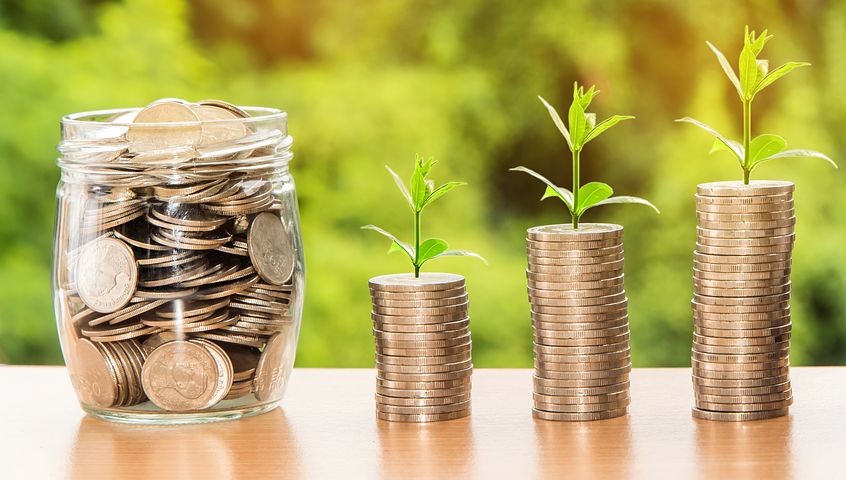Upcoming Trip? Rain Day? Unexpected Expense? Don’t get caught by surprise. Utilize your Savings Account.
Whether you’ve just gotten your first job, or have been working for years, now is the time to start saving money. Saving money doesn’t have to be just for retirement, or for buying a house. There is no threshold amount for an expense for which you can start saving. A savings account can come in all shapes and forms. This article will cover a few levels of savings, and different strategies that can help you save towards your goals.
Disclaimer: The thoughts and opinions expressed in the article are personal opinions only. This should not be construed as financial advice for your given situation.

Before Opening a Savings Account
If you’re new to savings accounts or being conscious of your spending, start by keeping track of your expenses. Websites and apps like Mint or Tiller are excellent tools that automatically log and categorize your expenses. Additionally, setting a budget is an excellent way to start finding money for savings. Being aware of your money and movement in and out of your account is a key aspect to saving. If you don’t know how much money you have, or how much you’re spending, you won’t be able to know what you can save. You must know what spending is absolutely necessary.
Don’t get me wrong, saving can seem overwhelming at the beginning. Once you start, it can quickly become a part of your life that you don’t even realize you’re doing.

Beginner-Level Savings Strategies:
If you’re looking at just getting started with some basic savings, there are many ways that you can start. An easy way to start seeing your money grow is to put aside a portion of your income. Even if money is tight, putting away a few dollars every month can quickly add up.
The best thing to do if you are trying to grow your savings is to have a dedicated savings account. Most major banks will allow you to have a separate checking and savings account. Having a distinction between day-to-day spending, and your savings will help you see the progress you’re making. This can encourage you to continue to save, rather than just spend the money since it’s there.
Where to find money to save.
While you may not be confident in where find the money to start saving, one of the best ways I’ve been able to cut down on my spending is through meal planning. Reducing the number of times that I go out to eat has allowed me to put that money into a savings account.
Another easy way to start saving is to slowly cut down on unnecessary spending. Instead of going to your favorite coffee shop on your way to work, simply skipping one day a week can give you an extra $20 a month. Assuming you spend $5 every time.
This adds up to an extra $240 every year.
By finding small ways to save, you’ll quickly start to notice your savings account grow. Another easy way to grow your savings is to round-up your transactions, and put the change into your savings account. Say you go to a coffee shop on your way into the office, your $3.75 coffee becomes $4 with $0.25 going directly into your savings. Lunch at a near-by fast food chain goes from $6.55 to $7.00 with $0.45 sent to your savings. In three months I’ve been able to put aside $120, just by rounding.

Intermediate-Level Savings Strategies:
What I have found that works for me are having multiple accounts set up for my various savings goals. I have money set aside for monthly bills, new clothes, a future trip that I’ve been planning, car maintenance expenses, and general fun like a night out with co-workers.
This is something that can help you take yours to the next level.
Certain banks allow you to create “buckets” or distinct areas where you can pool your savings. These buckets can be for anything you’d like, and are how I keep track of the goals I listed above. When I make transfers to my savings, I have the option to split the money any way that I wish. Is there a trip coming up soon? I’ll put a little more into my trip bucket. Is there a new game coming out that I’ve had my eye on? I’ll put a little more into the fun bucket. This helps me prioritize what I spend my money on. Having all of your money in a single place can make it a little more difficult to see how your spending impacts your savings.
Let’s say I want to go out a few weekends in a row with my friends. But don’t have enough in my fun bucket. I can always take some from my trip, but that means it may take a little longer to reach that goal. Looking at savings this way makes you stop and decide if your spending is necessary. You don’t have to stop going out or completely change your lifestyle. You just become more aware of where your money goes, and what you’re saving for.

What are APYs?
Another thing to consider is where you’re saving your money. Different banks offer different savings rates, and these can impact how much money you end up with after a while. These rates or Annual Percentage Yields (APYs), let you how much interest you’ll earn on your account for over one year. Many big banks (those you see of a lot of street corners) typically offer low APYs, around 0.01% for their accounts. However, there are many savings-oriented banks offer rates around 1.5-2.0% The differences these rates have on your savings at the end of the year can be incredibly drastic.
Money doesn’t have to be something you worry about or are afraid to discuss. There is an incredible number of resources that can help you figure out what options are best for you based on your current situation.
You don’t have to transfer large amounts into your savings account on a regular basis, and you shouldn’t feel bad if you spend it. Having an insight into your finances is a great way to get started, and can lay the groundwork for reaching your goals, no matter how big or small.
Pin This Post!




